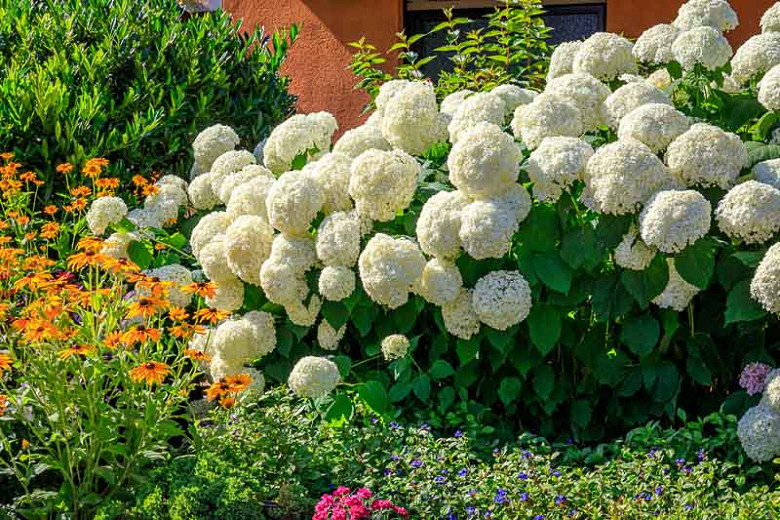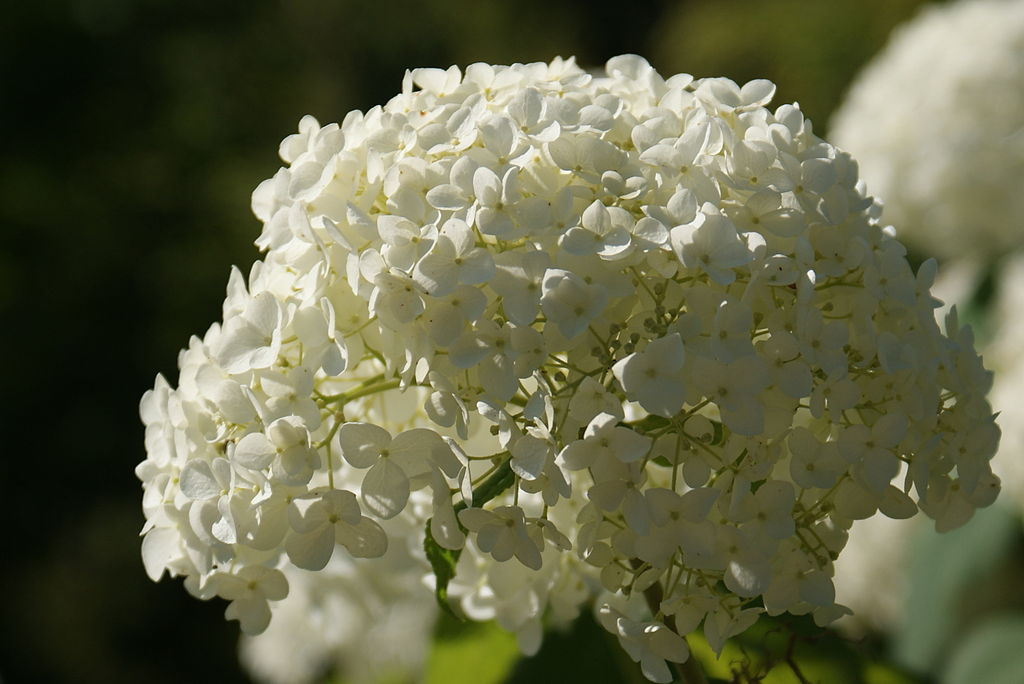Grow Your Own Hydrangea Annabelle Shrub
Grow Your Own Hydrangea Annabelle Shrub
Hydrangea arborescens 'Annabelle' is a popular shrub known for its large, white flower heads. It is easy to grow and care for, making it a good choice for gardeners of all levels of experience.
In this blog post, we will discuss the basics of growing Hydrangea Annabelle, including:
- When and where to plant
- Soil and water requirements
- Fertilizing and pruning
- Pests and diseases
- Propagation
We will also provide some tips for troubleshooting common problems.
When and Where to Plant
Hydrangea Annabelle can be planted in spring or fall. The best time to plant is in the spring, when the soil is still cool and moist. However, it can also be planted in the fall, as long as the ground is not frozen.
When choosing a location for your Hydrangea Annabelle, select a spot that receives partial sun to full shade. Too much sun can cause the leaves to scorch, while too little sun can lead to poor flowering.
The soil should be moist but well-drained. If your soil is sandy or poor, amend it with compost or manure before planting.
Soil and Water Requirements
Hydrangea Annabelle prefers moist, but well-drained soil. The soil pH should be between 5.5 and 6.5. If your soil is alkaline, you can add sulfur to lower the pH.
Water your Hydrangea Annabelle regularly, especially during the first year after planting. Once the plant is established, you can water it less frequently. However, it is important to keep the soil moist during the flowering period.
Fertilizing and Pruning
Hydrangea Annabelle does not require a lot of fertilizer. A light application of compost or manure in the spring will give your plant a boost. You can also fertilize with a balanced fertilizer (such as 10-10-10) once a month during the growing season.
Pruning is not necessary for Hydrangea Annabelle, but it can help to keep the plant compact and encourage new growth. You can prune your plant in the spring or fall.
Pests and Diseases
Hydrangea Annabelle is relatively resistant to pests and diseases. However, it can be susceptible to aphids, scale, and powdery mildew. If you see any pests or diseases on your plant, treat them immediately with an insecticidal soap or fungicide.
Propagation
Hydrangea Annabelle can be propagated by softwood cuttings in the spring or summer. To take a softwood cutting, choose a healthy branch that is about 6 inches long. Remove the lower leaves from the cutting and dip the end in rooting hormone. Plant the cutting in a pot of moist potting mix and place it in a warm, shady location. Keep the soil moist and the cutting should root in about two weeks.
Troubleshooting
If your Hydrangea Annabelle is not blooming, it may be due to a lack of sunlight, water, or fertilizer. It may also be due to a pest or disease problem. Check your plant for any problems and take corrective action as needed.
Conclusion
Hydrangea Annabelle is a beautiful and easy-to-grow shrub that can add a touch of elegance to any garden. With a little care, you can enjoy its large, white flowers for many years to come.
If you're looking for a beautiful and low-maintenance shrub to add to your garden, then the hydrangea arborescens 'Annabelle' is a great choice. These stunning plants produce huge, round clusters of white flowers that can reach up to 12 inches in diameter. They're perfect for adding a touch of elegance to any shady spot in your yard.
Annabelle hydrangeas are hardy in USDA zones 3-9, so they can be grown in most parts of the country. They prefer moist, well-drained soil, but they're also tolerant of drought conditions. And because they're relatively pest- and disease-resistant, they're a great choice for even the most inexperienced gardeners.
If you're interested in learning more about hydrangea arborescens 'Annabelle,' I recommend visiting . This website has a wealth of information about the plant, including its care requirements, planting instructions, and pest and disease prevention tips.
FAQ of hydrangea arborescens annabelle
Q: What is Hydrangea arborescens Annabelle?
A: Hydrangea arborescens Annabelle is a popular shrub that is known for its large, white flower heads. It is a hardy plant that can tolerate a wide range of conditions, making it a good choice for many gardens. Annabelle hydrangeas typically bloom in late summer and early fall.
Q: Where does Hydrangea arborescens Annabelle grow?
A: Annabelle hydrangeas are native to North America and can be found growing in a variety of habitats, including woodlands, meadows, and roadsides. They are hardy in USDA zones 3-9.
Q: How to care for Hydrangea arborescens Annabelle?
A: Annabelle hydrangeas are relatively easy to care for. They need full sun to partial shade and well-drained soil. They should be watered regularly, especially during hot, dry weather. Annabelle hydrangeas do not need to be fertilized often, but a light application of fertilizer in the spring can help promote blooms.
Q: How to propagate Hydrangea arborescens Annabelle?
A: Annabelle hydrangeas can be propagated from cuttings or from seed. To propagate from cuttings, take 4-6 inch cuttings in the spring or early summer. Remove the lower leaves and plant the cuttings in a pot of well-draining potting mix. Keep the soil moist and place the pot in a shady location. The cuttings should root in about 6-8 weeks.
Q: How to prevent pests and diseases in Hydrangea arborescens Annabelle?
A: Annabelle hydrangeas are relatively resistant to pests and diseases. However, they can be susceptible to aphids, scale, and powdery mildew. If you notice any pests or diseases, you can treat them with insecticidal soap or neem oil.
Image of hydrangea arborescens annabelle
5 different images of "hydrangea arborescens annabelle" from Pinterest:
- A large, white hydrangea bush with full, rounded blooms.

- A close-up of a single hydrangea bloom, showing the delicate petals and the central cone of stamens.
- A row of hydrangea bushes in full bloom, providing a backdrop for a white picket fence.
- A hydrangea bush in full bloom, surrounded by lush green foliage.
- A hydrangea bush in full bloom, reflecting in a pond.



Post a Comment for "Grow Your Own Hydrangea Annabelle Shrub"